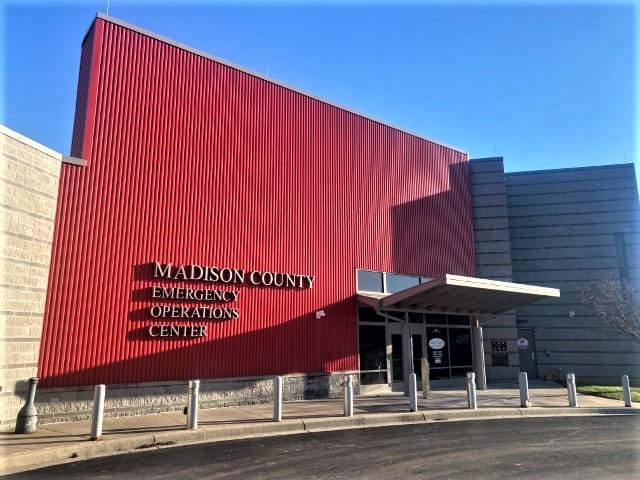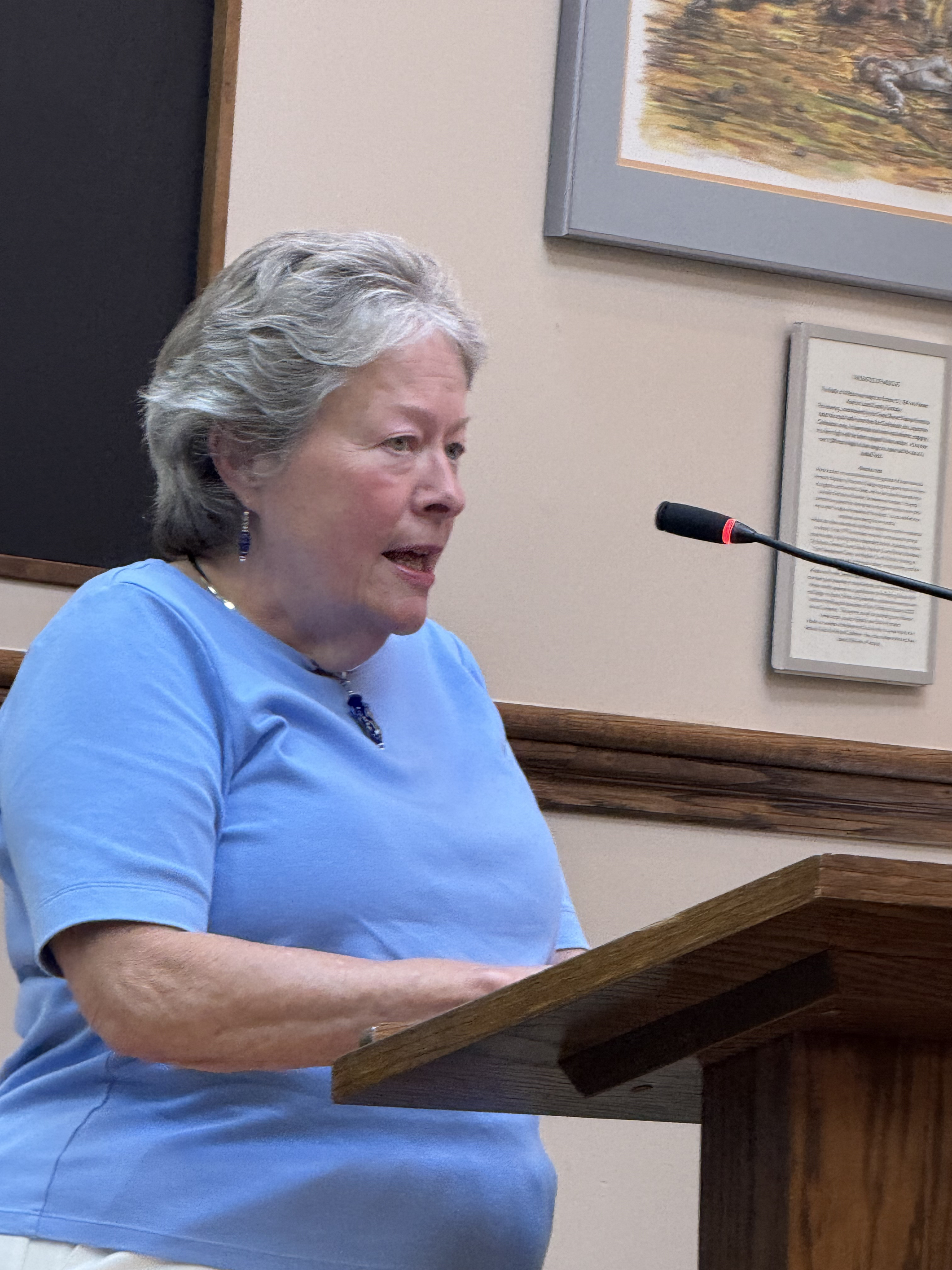Bumpy roll out of new 911 tax prompts call for 'patience' as appeals process is underway
Official: 'We know there's bad data'

Council briefs
911 kerfuffle
The problematic rollout of a new tax to pay for the countywide 911 services was much on the minds of Berea City officials at their first regularly scheduled meeting for July.
Last month’s public notification of property owners by a letter from the County that they will be assessed a fee in their annual property tax bill in October, based on their property’s zoning and square footage, created mass confusion and ire as many recipients of the letter took exception with the County’s totals.
That’s according to Mayor Bruce Fraley and city administrator, Shawn Sandlin, each of whom spoke at length during the Council meeting.
“We know there is bad data,” Sandlin told Council, clarifying why so many Bereans have been calling City Hall to complain about their respective 911 fee assessment. “But we also want to help get the data correct,” Sandlin said.
Fraley offered a lengthy statement to citizens about the issues surrounding the rollout, and urged those who believe their property has been incorrectly assessed to appeal before the deadline of midnight, next Friday, July 11. He said that for those who cannot meet that deadline, and can offer valid proof of why, their appeals will be accepted.
“There’s been a lot of feedback on the 911 fee,” Fraley said. “It is clear that we need a strong 911 center. It is also clear that all of us [Berea elected officials], and our colleagues in Richmond and Madison County, need to be receptive and hear the concerns and feedback of the citizens. That includes both positive feedback and criticism, because wisdom and truth are often found in the dissenting voice. Collectively, all decision makers should take the feedback and concerns into consideration and take action as the 911 fee process is improved over time.”
At issue is the formulas used to generate the 911 fee schedule. Property values and square footage recorded in the County’s Property Valuation Administration (PVA) were the basis of the assessment, but many residents have claimed these records are incorrect, according to Sandlin.
“Our staff didn’t make this decision, but we want to help through this appeal process and to get it right,” Sandlin said. “Just give us some patience and let us help each citizen that needs it. We’re more than willing to listen to you, and to provide any documentation that we need to go through the appeal process.”
IF YOU NEED HELP APPEALING YOUR 911 FEE, CALL 859-228-1048. YOU CAN ALSO VISIT THE COUNTY’S 911 HELP PAGE, WHICH INCLUDES A LINK TO SUBMIT AN APPEAL. NON-ELECTRONIC APPEALS CAN ALSO BE MADE— CALL THE NUMBER ABOVE FOR MORE INFORMATION.
Councilmember Teresa Scenters told Sandlin she had no recollection of square footage having been mentioned as a criteria for assessments when meetings about the fee were held jointly with the County and the City of Richmond.
“You’re correct,” Sandlin responded. “We did present a manner that was based on [the number of] doors of a facility, but once we got into commercial and businesses, it became based on square footage.”
Sandlin also said that the square footage formula was easiest on residents, reducing their fees substantially. The average 911 fee for residential property owners will be $32 annually, according to Sandlin.
Councilmember Steve Davis said after the meeting that for apartment building owners, the fee will amortize across units at a rate of about “three or four dollars per each” but that he worried some landlords might use the fee as a way to gouge tenants.
The new 911 assessment has been discussed for the past year, and was noted in last year’s property tax bills, but many residents have complained the notice received last month was the first they’d heard of it.
“Our communication can’t just be through traditional models,” Councilmember Steve Caudill said during Council comments. “I read a newspaper, but many people don’t … so while I felt like … this had been talked about several times, what I’ve learned is that people didn’t know anything about it.”
Caudill also noted that this is the first time PVA data has been applied to a fee schedule, and that it might not have gone to plan as a result.
There are multiple reasons for the novel 911 fee. The first is that previously, 911 fees were assessed according to telephone landlines.
In a previous report, Madison County 911 Director, Wendy Lynch, told The Edge that, “Now, the average 85 to 90 percent of the calls that come in are from cell phones.”
Cell phones are taxed already by the state, which collects the monies from service carriers and then distributes it not according to usage of 911 in any given area, but according to the number of each carrier’s subscribers in a given area code, according to Lynch. This is problematic, however, she said.
“Like the students at EKU. We're not collecting their fees. Those fees are going on their cell phone bills back to their hometown. So the landline fees have really dwindled down and cell phone fees don’t make it up,” Lynch said.
Another reason for the fee is the end of CSEPP monies. CSEPP stands for, Chemical Stockpile Emergency Preparedness Program, which has been co-administered by the County and the US Department of Defense for decades, as chemical weapons have been stockpiled at the Blue Grass Army Depot. Now that the stockpile has been decommissioned, there is no need for an emergency response to a chemical leak. Therefore, CSEPP funds are set to cease by the end of this year, Lynch told The Edge.
Although CSEPP funds also paid for the construction of the cutting edge facilities that comprise the County’s Emergency Operations Center, Sandlin told Council during the meeting that the new 911 fees are to pay solely for the County’s 911 services, not for any other portion of the emergency operations facilities.
Last month, the County upgraded its 911 services, launching “Texty”, a program that allows persons in distress to text “911” instead of calling the number, thus expanding access to the emergency service to those who are hearing or speech impaired, or to those for whom making a phone call would be unsafe.
For more information about the County’s emergency communications service, here is an interview with Lynch.

Public comment
Council also heard from Berean Mim Pride, who also is an appointee to the City’s Human Rights Commission. Pride thanked Fraley and the Council for extending their support to last months’ Juneteenth event. Pride said she was moved by the event, and by the support it received from the City.
“This city can do anything it makes up its mind to do,” Pride said.
Resolution
Relief for motorists stranded at the end of Kenway Street will soon have an outlet, thanks to the unanimous voice vote passage of Resolution 12-2025 authorizing the extension of the street to Hwy 1016.
During the Council Comments section, Councilmember Steve Davis thanked fellow members Jerry Little and Ronnie Terrill for their constant campaigning for Kenway to be extended, doubling the options for exiting the neighborhood from one to two.
“We’ve needed that for a very long time,” Davis said, adding that in the future, he hopes the City will be more aware of whether developers are adding enough ways to enter and exit. “We need to start making sure that our developments have two ways for access,” he said.
Department head reports
Sewers
Berea Municipal Utilities assistant general manager, Josh Gabbard, told Council about efforts by Utilities to the sewer department has been investing a higher than usual amount of time and resources into stemming the inflow to the sewer system from ground and storm waters. Utilities is also seeking upgrades to keep the sewer system’s integrity, especially as Berea continues to grow, Gabbard said.
The department has been conducting system-wide inspections of sump pump connections and other customer-maintained lines, with an eye for missing or damaged caps, to prevent non-municipal wastewater from entering the system.
Customers found to be noncompliant will soon receive letters instructing them on how to repair their leaks into the system, Gabbard said.
The Brushy Fork sewer shed is being inspected for need of repairs, which are being made as issues are discovered. Flow monitoring and evaluation for the Brushy Fork were shed is also ongoing, and has helped to identify where the most infiltration has been occurring systemwide. A bid will go out before the end of the year for a project to correct this issue, including relining of pipes and manholes.
The pump station at Hwy 595 is being designed by Bell Engineering, and will also be bid out before the end of FY25-26. Gabbard said this is expected to add filtration capacity at the northern end of town where most of the growth is happening.
All of this work, Gabbard said, is funded by the state’s Cleaner Water initiative.
Gabbard also said that the computer system, including the hardware, the department uses is now twenty years old and will be replaced this year.
Two employees, Frank Carrier and Josh Bale, each have completed training programs that have elevated their skillsets.
Codes and Planning
Brian Reed, the assistant director of Codes and Planning also addressed Council. He said the pool is now 70% complete and the deck around it is about 60% complete. Construction of the pickleball complex will begin later this summer. The bathrooms in Community Park are currently being reviewed by the state’s department of local government.
Meanwhile, the utility poles and transformer on Ellipse Street are currently being moved for the construction of the shared use path.
The architectural plans for the Ferristown Community Center to be built off Menelaus Road, have been conditionally approved, pending a few minor revisions, Reed said.
Mayor and Council comments
Fraley and Sandlin both made their comments together prior to Council. In addition to Davis and Caudill, Little said he wished that the square footage criteria for the 911 fee had been discussed publicly before it was adopted, and that commercial spaces such as warehouses are being treated unfairly by the fee, as they are paying the most. Little said he hopes that adjustments can be made to the fee schedule over the next six months to make it more equitable.
John Payne reminded residents to file their appeals as soon as possible, and to not feed the black bear recently spotted in the WalMart parking lot because, “It is a wild animal.”
Councilmember Katie Startzman noted that the City’s budget should also be reviewed at the six month mark to see if all is on track.
Scenters had no additional comments.
Council meets every first and third Tuesday of the month at the City Hall Annex, 304 Chestnut Street at 6:30 PM. You can also attend remotely by watching the City’s YouTube channel.
The Edge is a reader-supported publication. That means if you support it, The Edge can report it. Please become a paid subscriber.
